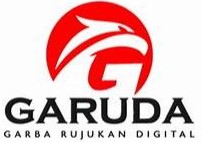Design of Control System for a Desktop Injection Molding Using Raspberry Pi 3 B+
DOI: https://doi.org/10.25077/metal.7.2.%25p.2023
Author(s)
Rahmat Rahmat (Universitas Dharma Andalas)

Meiki Eru Putra (Universitas Dharma Andalas)


Zulkifli Amin (Universitas Andalas)


Abstract
Keywords
Full Text:
PDFReferences
W, Michaeli, “In Plastics Processing”, An Introduction Carl Hanser Verlag: Plastic Processing, Vol. 21, No.1, 232-255. 1995.
A, Akbarzadeh, “Parameter Study in Plastic Injection Molding Process using Statistical Methods and IWO Algorithm”. International Journal of Modeling and Optimization: Plastic Injection, Vol.1, No.2, 141-145. 2011
B.A.Davis,”Compression Blow Molding”, Hanser Publishers: Blow and Extrusion Molding, Vol. 5, No.31, 110-119. 2003.
S.Lal, “Optimization of Injection Molding Process Parameters in the Molding of LowDensity Polyethylene (LDPE)”. Internatinal Jounal of Engineering Research and Development: Process Injection Molding, Vol.7, No.5, 35-39. 2013.
urnbull, “Control Systems Ltd”, Mulberry Lane Goring by Sea: Control Extrusion, Vol.12, No. 4, 222-224.1997.
Goodship, Middleton, “Design and Manufacture of Plastics Components for Multifunctionality”, Elsevier Atlanta: Structural Composites, Injection Molding and 3D Printing, Vol. 1, No. 3, 90-100.2016.
J. Avery, “In Gas-Assist Injection Molding”, Principles and Applications Hanser Publishers: Type of Molding, Vol. 2, No.1, 124-143. 2001.
Lisdiyanto, Angga, “Utilizing the AHP Approach, a Decision Support System for Performance Assessment for the Selection of Exceptional Lecturers”, J. Tek. Inform, Vol. 5, No. 1, pp. 1–10, 2022.
Iswanto, “Book Microcontrollers”, Electrical Enginering University of Muhammadiyah: Yogyakarta, Vol.1, No.1, pp. 1-20, 2015.
 Article Metrics
Article Metrics
This article has been read : 104 timesPDF file viewed/downloaded : 34 times
Copyright (c) 2023 Meiki Eru Putra
View METAL's Stats

This work is licensed under a Creative Commons Attribution-NonCommercial-ShareAlike 4.0 International License.







